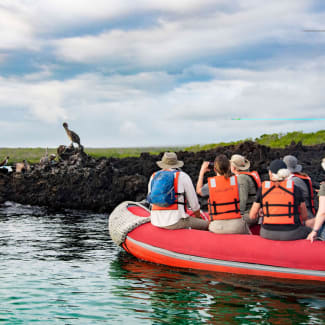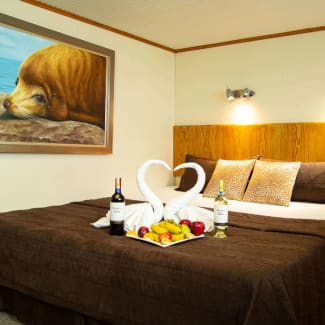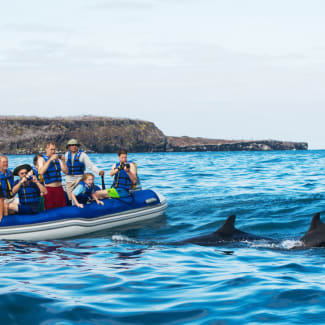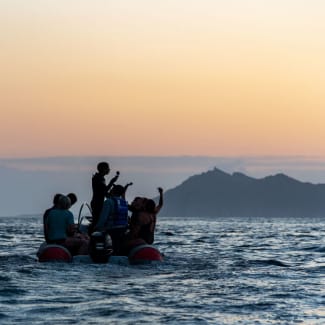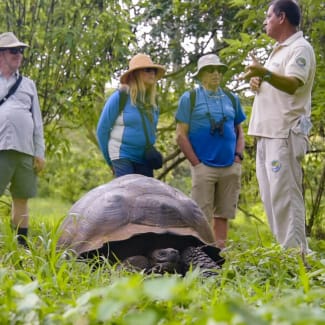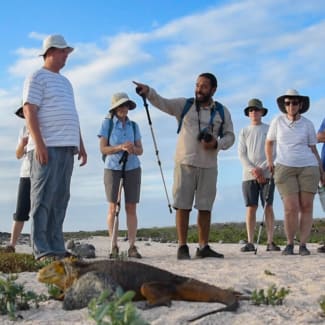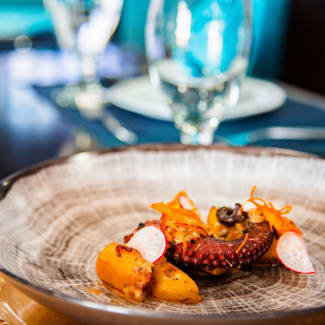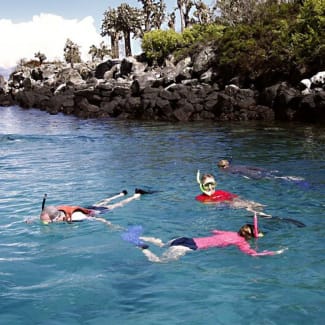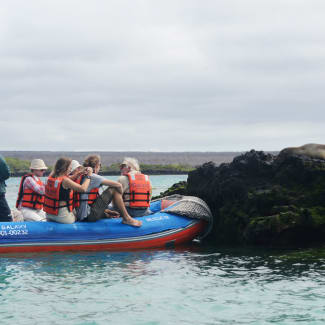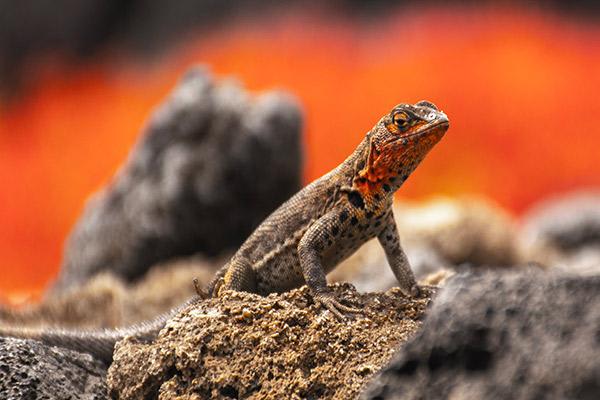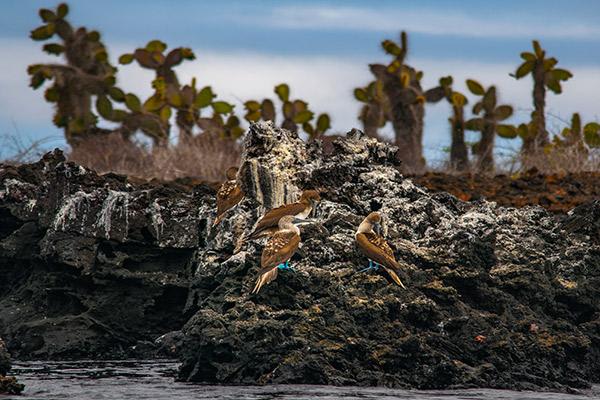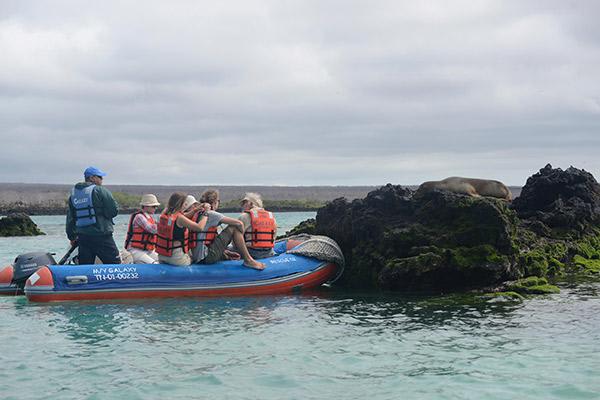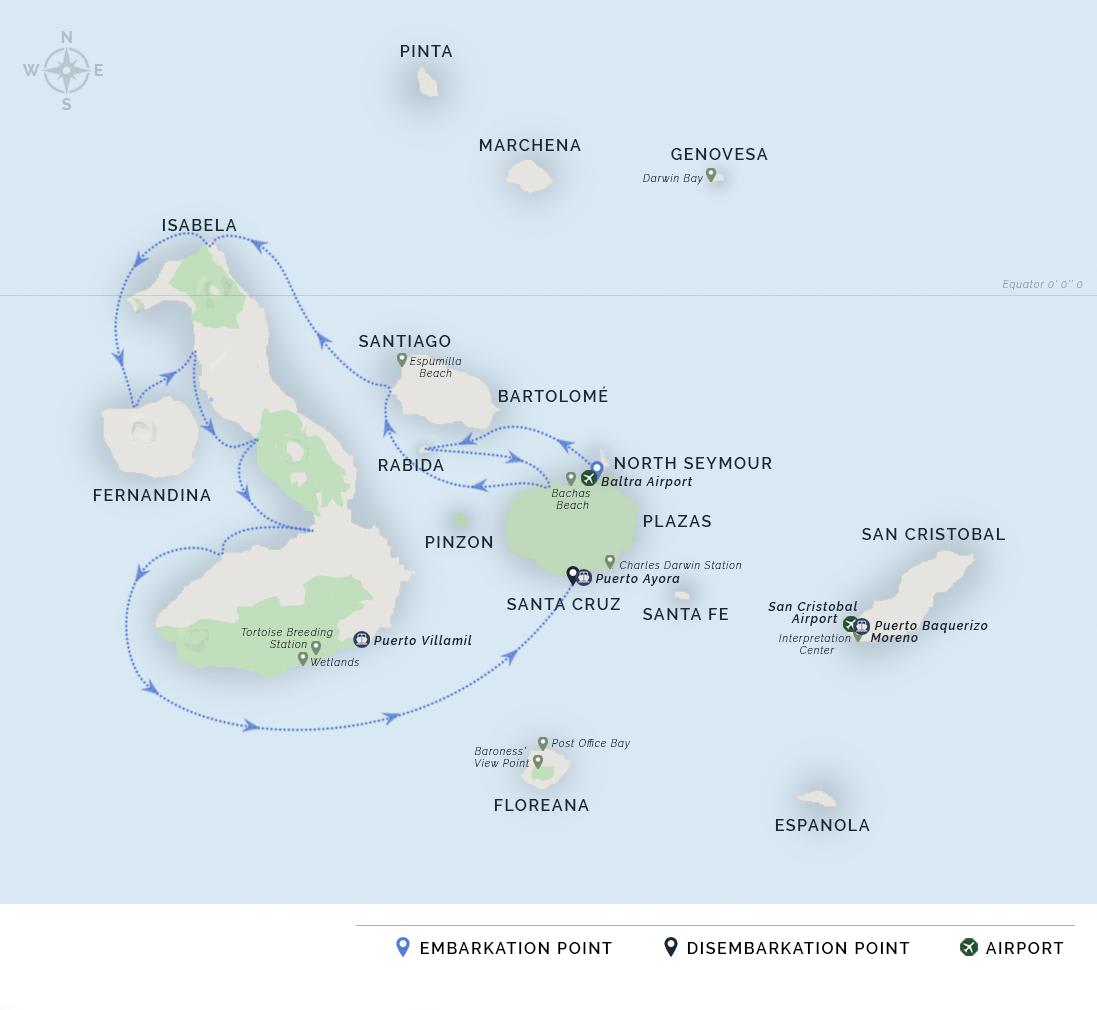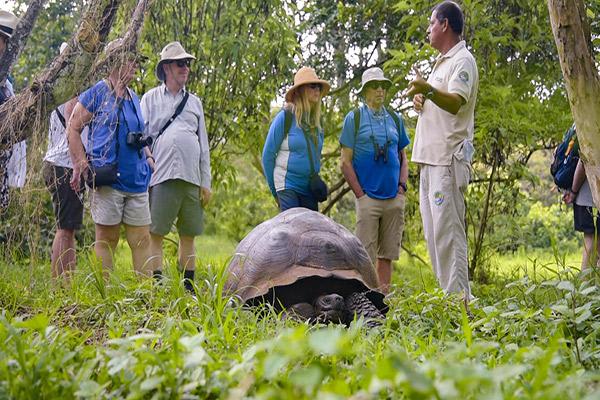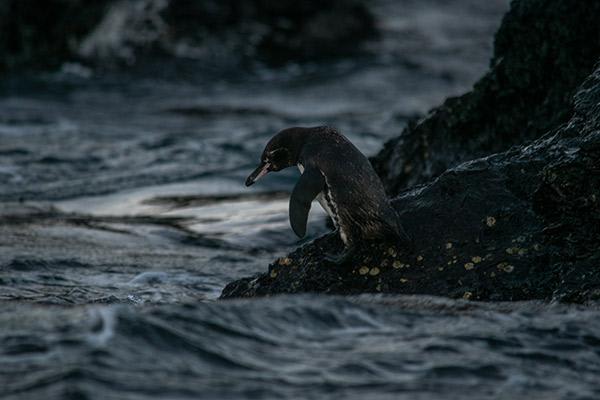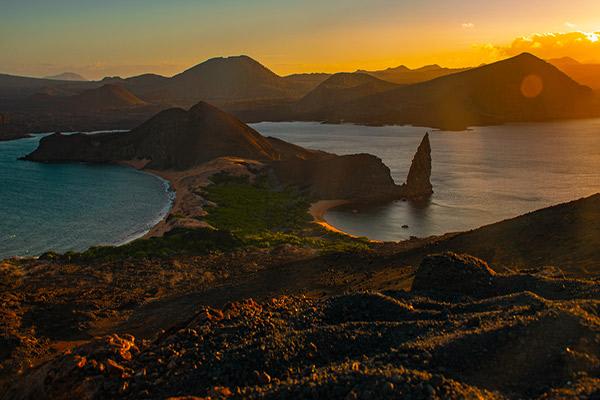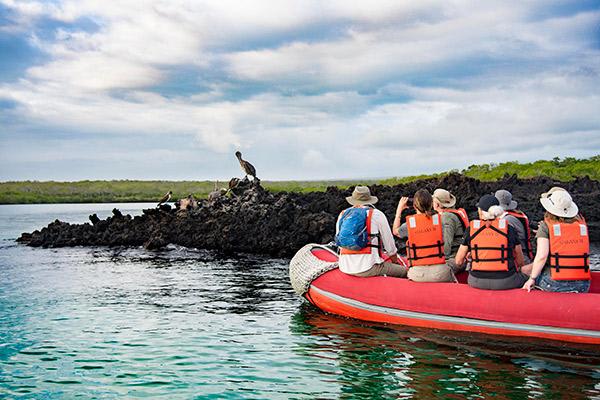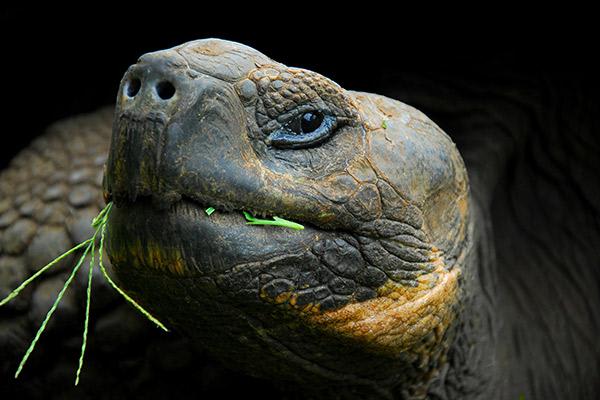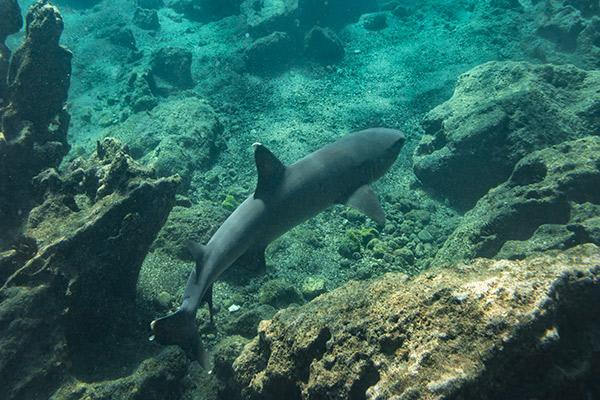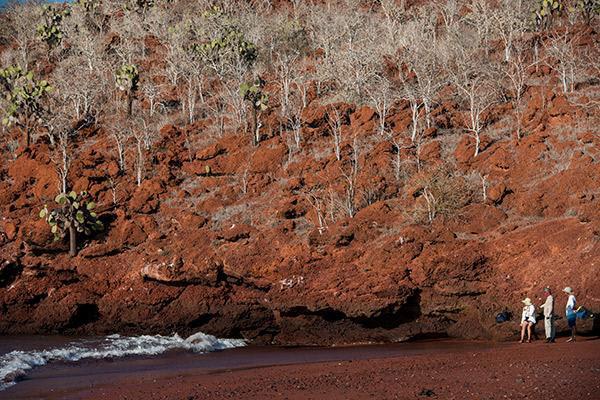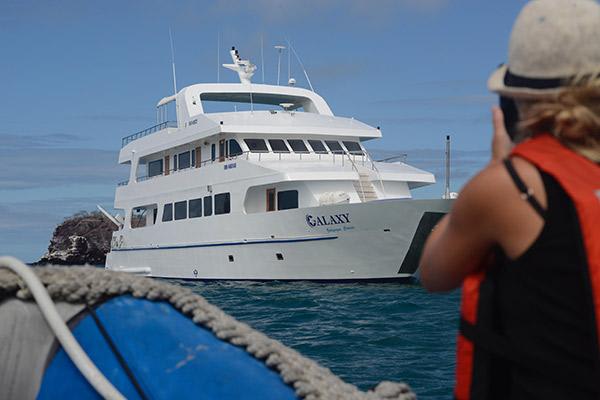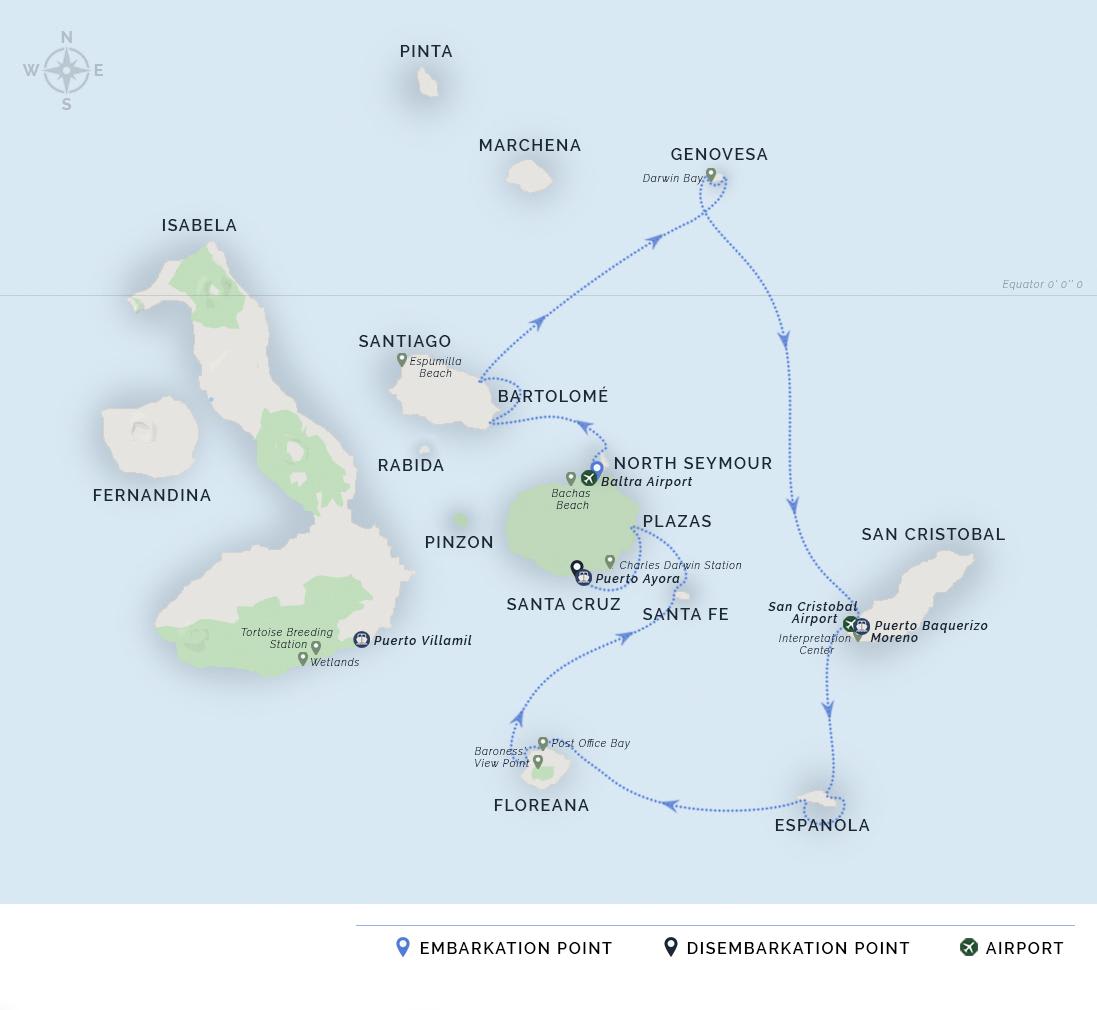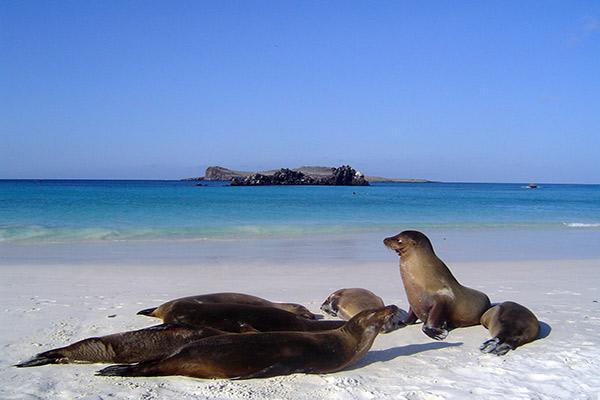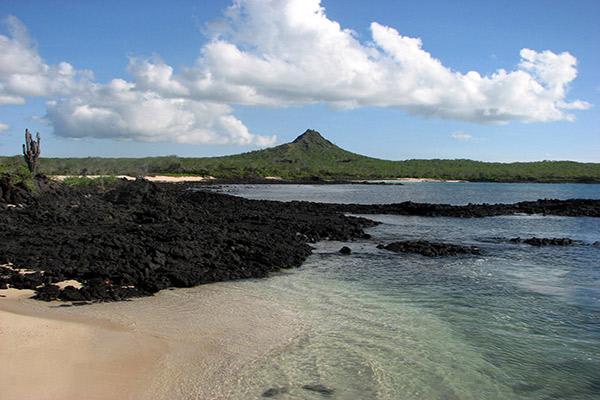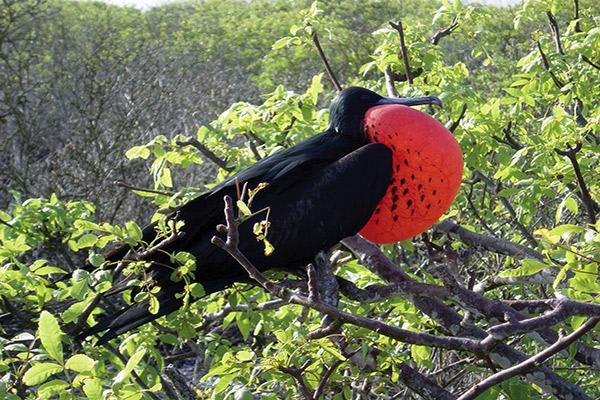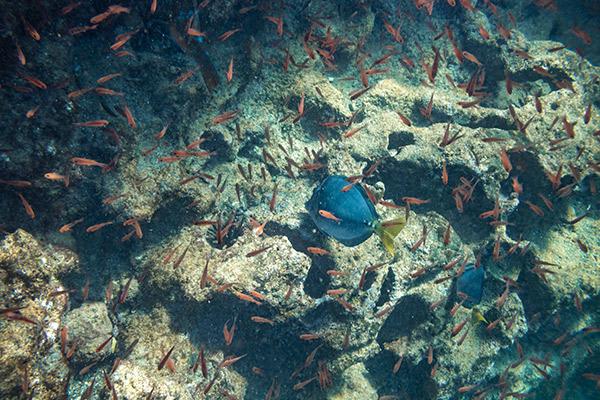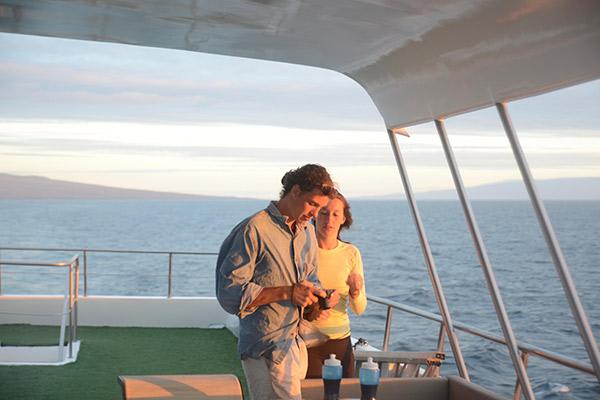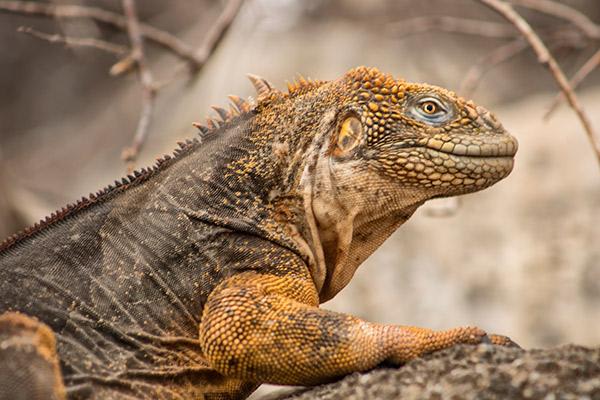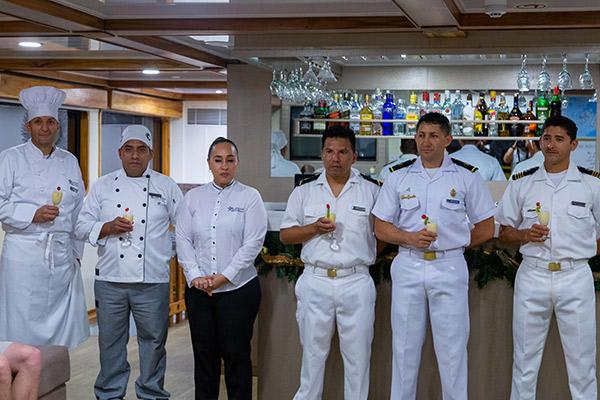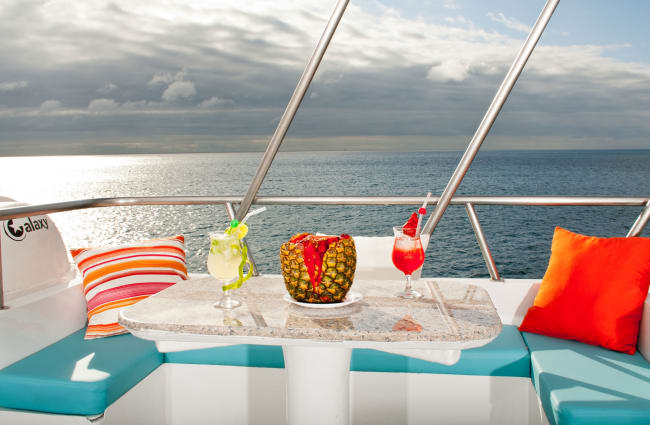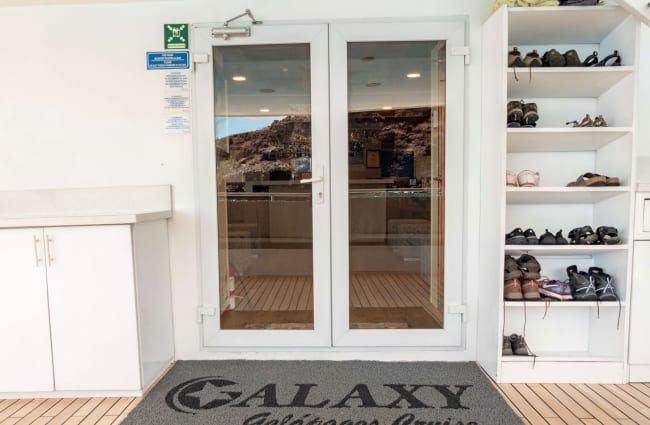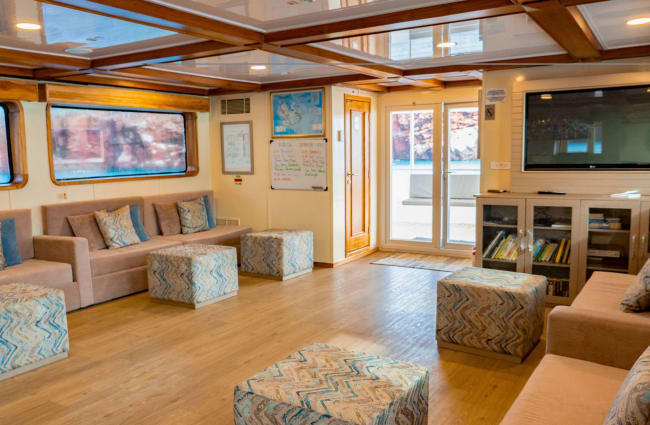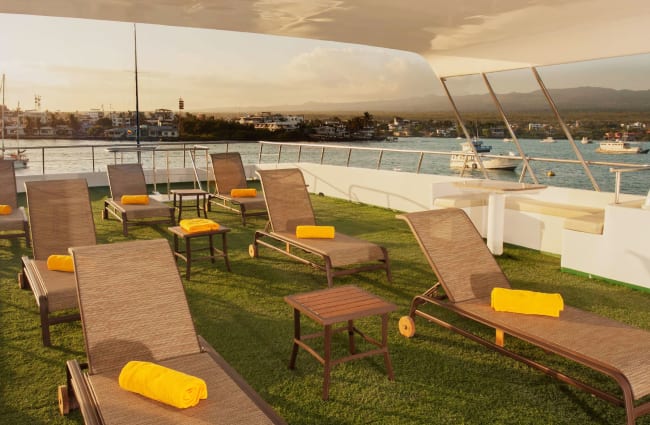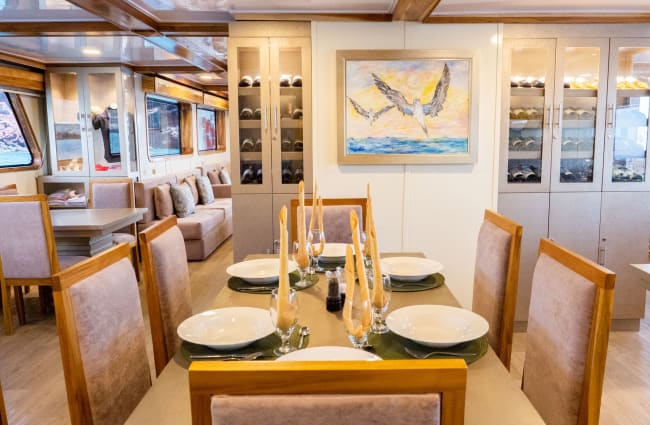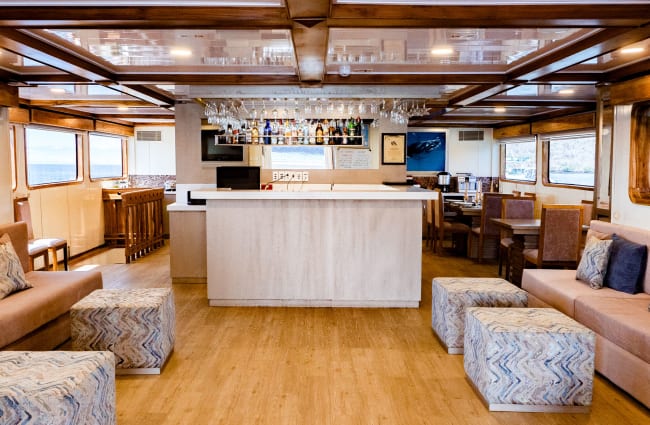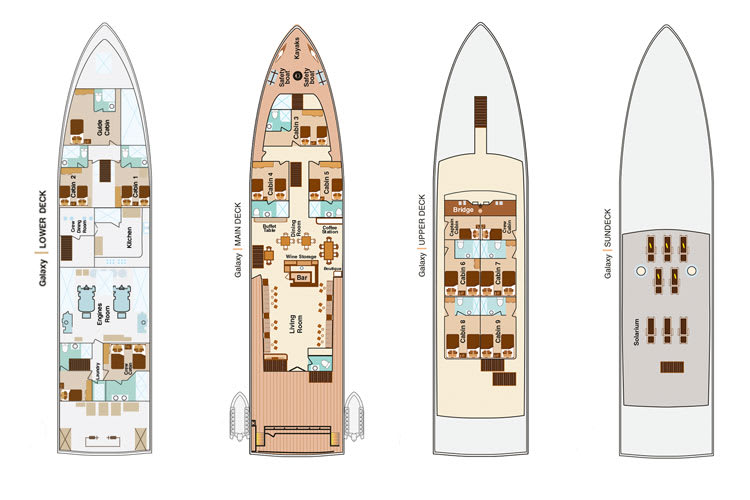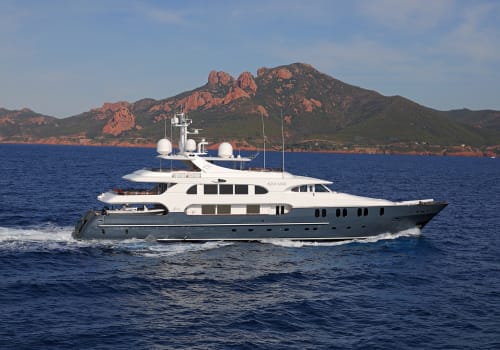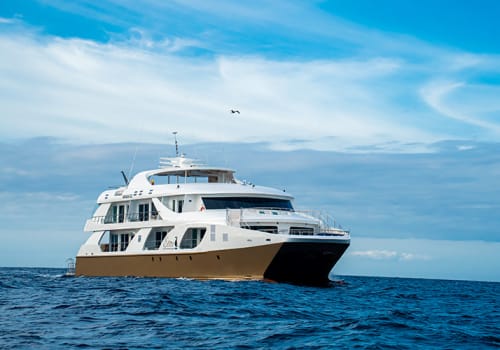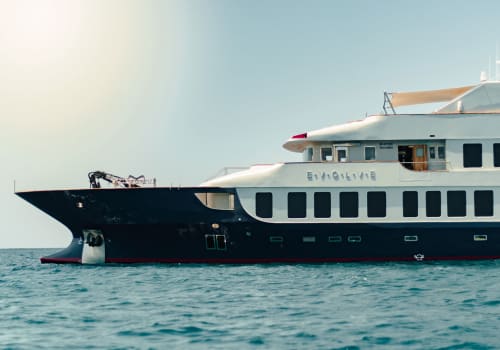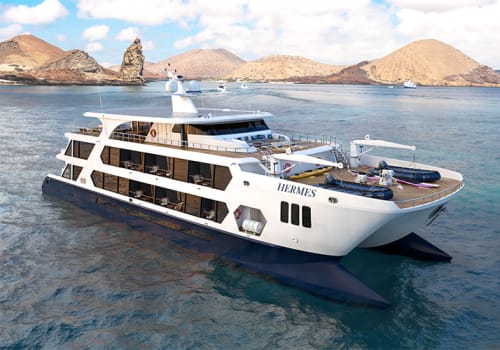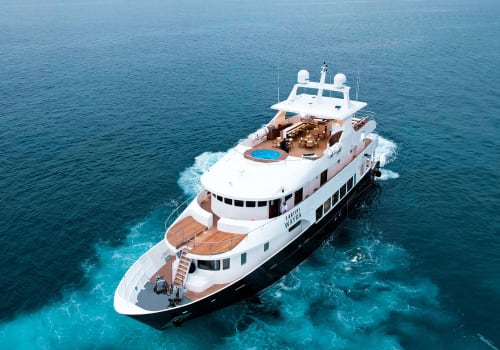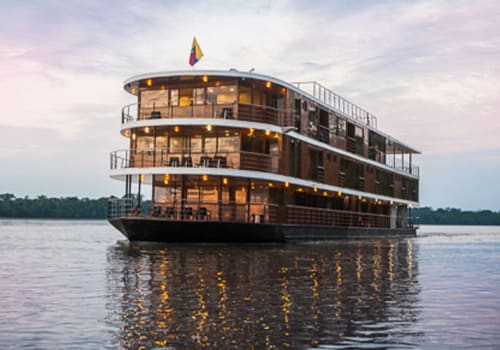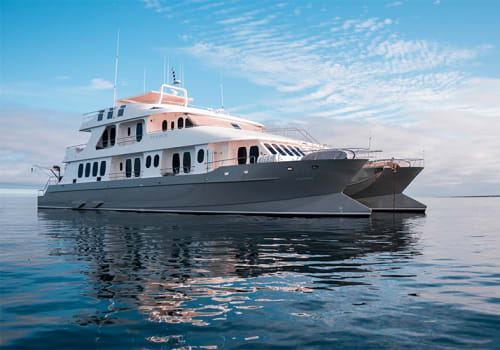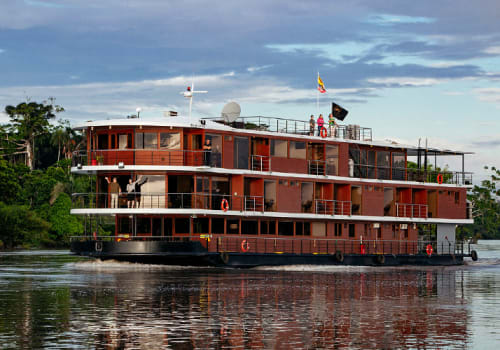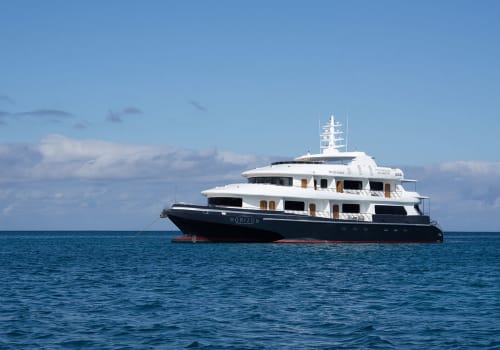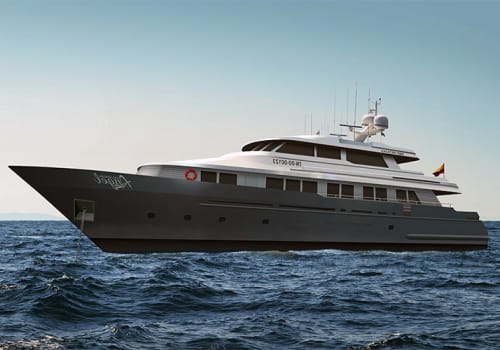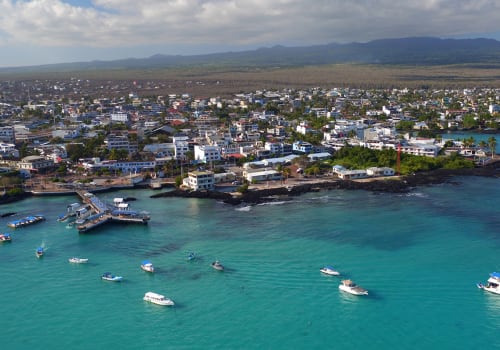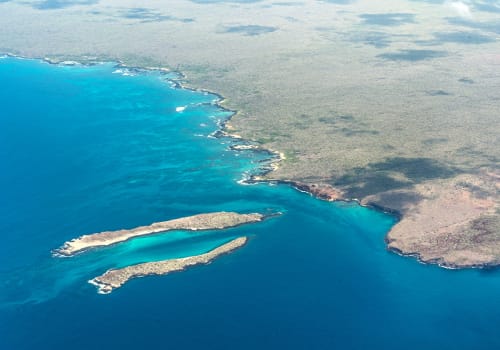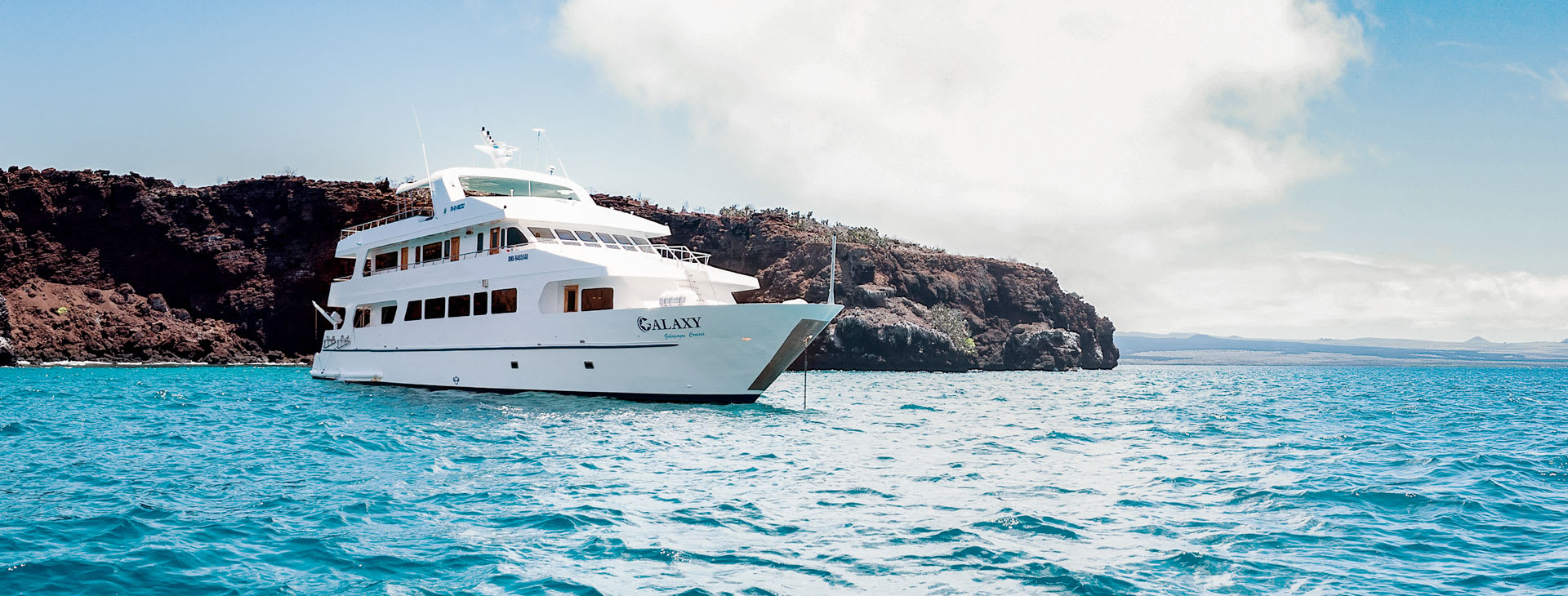
Galaxy
Overview
Are you looking for a cruise that allows you to connect with the Galapagos Islands on a deeper level while also pampering you with first-class amenities and service? Look no further than the M/C Galaxy I Galapagos cruise. With nine cabins hosting up to 16 guests, this 114-foot ship can be your home for the adventure of a lifetime.
Life On Board
An M/C Galaxy cruise expertly blends comfortable private places for relaxation and rejuvenation with social areas for sunbathing and meeting fellow travelers. From the air-conditioned cabins to a dining room surrounded by panoramic windows, modern-chic décor with rich wood tones and soft neutral hues sets the stage for comfortable sophistication. To make the most of every moment in this unique part of the world, head to the sun deck where you can recline on a lounge chair under a sunroof as you watch sea life, birds, and ever-changing landscapes.
For some fun away from the sun, curl up on a sofa in the living room, play a board game, sign in to the all-new Mydas App for onboard entertainment such as movies, digital books, and educational material on the breathtaking Galapagos Islands. Thanks to a delicious selection of menu and buffet foods, all prepared by an expert chef, mealtimes are a highlight of each day. Local and international cuisine, including vegan and gluten-free options, are sure to delight.
Exciting Excursions
No matter which areas or islands of the Galapagos call to you, the M/C Galaxy provides an itinerary to match your desire. Choose an itinerary along a southern route and spend five days exploring the islands of Floreana, Española, and San Cristobal. To experience the far-flung island of Genovesa, opt for the four-day itinerary along the northern route. Can’t bear to miss a thing? The eight-day western route is a deep dive into the area and includes stops along with Fernandina, Santiago, and Isabela islands.
What can you do during your time in the Galapagos? The eight-member crew and your bilingual guide will provide the perfect balance between relaxation and stimulating activities. The Galapagos Islands rank among the top 10 places to snorkel globally, and you can experience this thrill at Tagus Cove on Isabela Island, Pinnacle Rock on Bartolomé Island, or at Devil’s Crown off Floreana Island. Kayaking offers an adventurous, eco-friendly way to explore the coastlines while getting up close to species such as sea lions. Guided hikes are an excellent opportunity to see and learn about natural selection and species such as land iguanas, giant tortoises, and flightless cormorants. Best of all, the details are taken care of for you, and equipment such as wet suits, snorkels, and paddle-boards are included.
Safety At Sea
Aboard the M/C Galaxy, your safety and comfort are always of the utmost priority. The onboard team strives to create an ecological trip with a small environmental footprint without sacrificing convenience or luxury. The ship is Smart Planet certified and provides eco-friendly amenities in every room. Plus, there are ample survival rafts, lifebuoys, and life jackets, and other safety equipment on board, so you can cruise with complete peace of mind.
Anyone looking for authentic experiences in the most hidden spots within the archipelago will enjoy an M/C Galaxy Galapagos cruise, including those who want to do it all to those looking for a slightly slower pace. With oft-overlooked amenities like private bathrooms with hairdryers, a 24-hour coffee station, and a bar serving all your favorite cocktails, the M/C Galaxy has mastered the details of upscale cruising.
Itineraries & Prices
All itineraries are subject to change due to seasonal weather conditions (and resultant variations in river and tributary water levels) affecting accessibility to locations. Thus navigation routes, times and excursions may need to be modified at the cruise captain’s or your guide's discretion.
Accommodations
Social Areas
Suites & Cabins






Lower / Main Deck Stateroom
The suite features an array of entertainment from WIFI/internet services, DVD, Blu-Ray, and an iPod dock. It also has private access to an outdoor lounge and private ensuite facilities equipped with all the essential amenities to ensure you have a relaxing shower.










Upper Deck Stateroom
Guests can relax and unwind as they enjoy the majestic scenery. Guests will also find a DVD/ Blu-Ray player, a Bose SoundDock, and HD TV to keep them entertained in their rooms. The suite comes with private bathrooms equipped with amenities for guests’ convenience. It accommodates either a Double Bed or Twin Beds plus an extra bed for a third person, making them convenient for close friends or family members.

